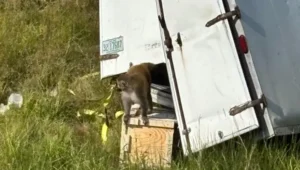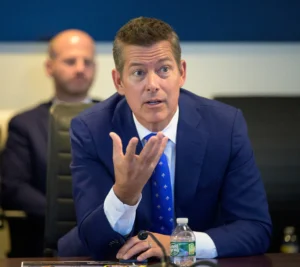Heavy Vehicle Leadership Group, carriers and the future of EPA’s Phase 3.
As transportation organizations grapple with proposed environmental regulations for heavy-duty trucks, vehicle manufacturers and suppliers are backing the Clean Trucks Plan. While they view the initiative favorably, both groups see the lack of recharging infrastructure as a challenge to meeting the goals of these regulations.
The U.S. Environmental Protection Agency (EPA) established its final rule for Phase 1 of the Clean Trucks Plan over a year ago, aiming to reduce emissions from heavy-duty vehicles and engines starting with the 2027 model year. This plan, with standards 80% stricter than current regulations according to the EPA, will be gradually implemented in several phases, addressing air pollution control in heavy-duty vehicles in Phase 1, and emissions from light and medium-duty vehicles in Phase 2, along with greenhouse gas emissions standards for heavy-duty vehicles in Phase 3, both proposed in April 2023.

Heavy-Duty Vehicle Leadership Group
On February 6th, the Heavy-Duty Vehicle Leadership Group (HDLG), composed of BorgWarner, Cummins, Eaton, and Ford, leaders in the automotive and engine industry, announced an alliance to support the EPA’s Phase 3 regulation. These companies have joined forces to push for the finalization of the regulation before March 31st. The group has issued a joint “Statement of Principles,” urging not to delay the implementation of Phase 3, scheduled for 2027, and rejecting any proposal to postpone it until 2030.
Furthermore, the HDLG suggests that the EPA conduct ongoing technical assessment of infrastructure development, battery costs, and other critical aspects. In their statement, the companies also emphasize the importance of technologically neutral regulations that instill confidence in the industry to invest in capital and resources, which would drive quality employment and technological leadership, key elements for decarbonizing the transportation sector.
According to information shared by FleetOwner, the HDLG alliance emphasizes that meeting these goals will require a whole-of-government approach, and other federal, state, and local government agencies must work with the private sector for commercially viable infrastructure, accelerating the adoption of zero-emission commercial vehicles.
Carriers and the future of Phase 3
Manufacturers are committed to low-emission vehicles, but carrier organizations criticize the lack of focus on recharging infrastructure in the EPA’s proposal for Phase 3 of the Clean Trucks Plan. The president of the Truck and Engine Manufacturers Association calls for a comprehensive government approach, while the president of the American Trucking Associations highlights the need to consider carriers’ operational challenges in transitioning to zero emissions.
Companies, including BorgWarner, Cummins, Eaton, and Ford, are committed to environmental, social, and governance (ESG) goals in their transportation and automotive sectors. In addition to these goals, manufacturers and suppliers must meet emissions targets set by the countries where they operate. In the U.S., the EPA mandates that automobile manufacturers achieve a target of 187 grams of carbon dioxide per mile by 2026 for light trucks.
The groups agree on the need for collaboration between government and the private sector to achieve emissions goals. This is not only crucial for the reputation of the entities involved but also for the billions of dollars in investments at stake. While an agreement may be reached among the HDLG, EMA, and ATA for a comprehensive government approach, broader industry collaboration is likely needed to meet these stringent emissions targets.

The 2025 Capitol Christmas Tree tour kicks off by the hand of Knight-Swift
The nearly 3,000-mile journey of the U.S. Capitol Christmas Tree began with a special celebration at the Nevada Day Parade in Carson City. The month

A new study links traffic accidents to violations of the ELP regulation
A new study analyzed the relationship between traffic accidents and drivers who violate the English Language Proficiency (ELP) regulation. A new study analyzed the relationship

Clean Truck Deal: Judge Halts California Emissions Agreement with Truck Manufacturers
Clean truck deal and California emissions return to the center of the national debate after a federal court blocks enforcement of the Clean Truck Partnership, pausing requirements tied to zero-emission truck adoption while litigation continues.

Truck Transport of Live Animals for Research: Lessons from the Mississippi Monkey Incident
The transport of live animals for research is under renewed scrutiny after a truck carrying rhesus monkeys overturned in Mississippi, allowing several to escape. This article explains what went wrong, how these transports are supposed to operate, and what lessons the trucking industry can take away.

Halloween activities for truck drivers: take the fun on the road
To celebrate this holiday safely while keeping the fun alive, we’ve put together a list of activities truck drivers can do to embrace the spirit

Secretary Duffy unveils new measures to strengthen trucking safety and compliance
In a press conference, Duffy pledged federal effort to eliminate fraud and improve trucking safety standards. On the morning of October 31, U.S. Secretary of
